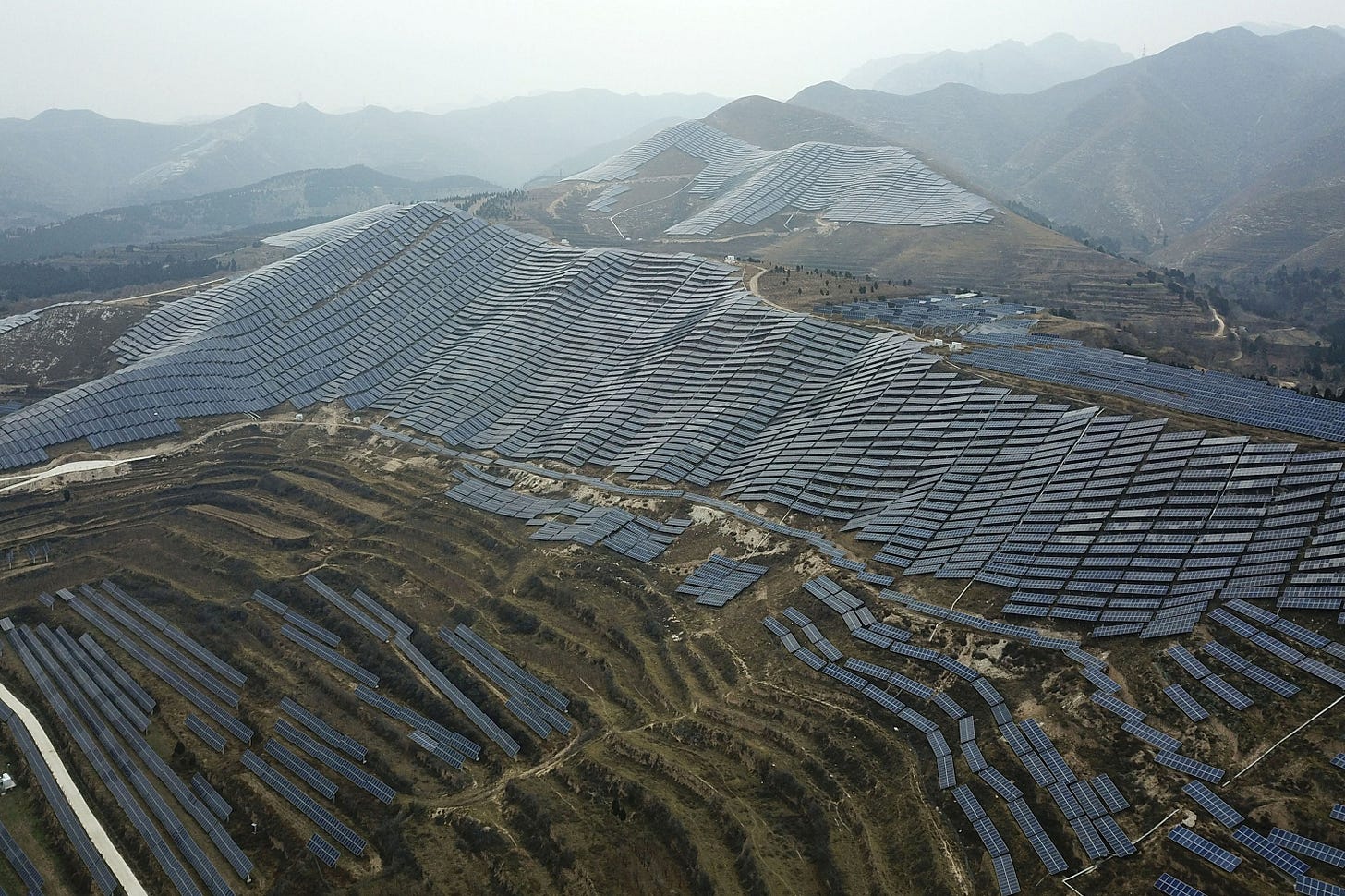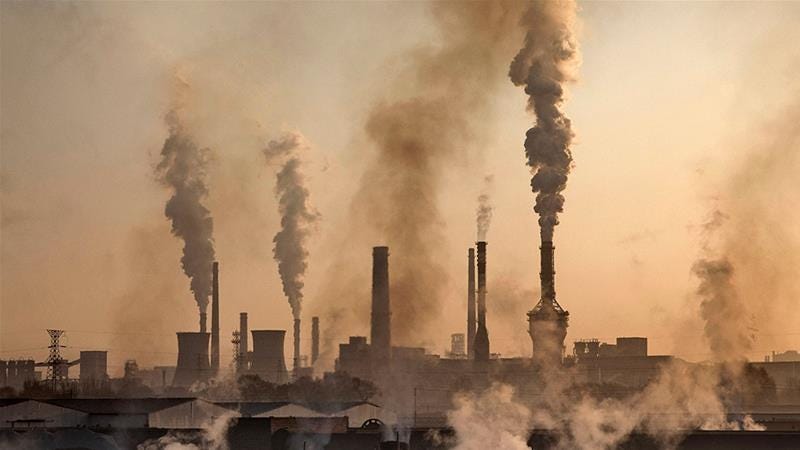At the United Nations this week China’s President Xi Jinping announced a new national climate target: “carbon neutrality by 2060.”
As a public statement, it’s meaningful: today China’s the world’s largest producer of new greenhouse gas emissions (GHG), and the largest financier of new fossil fuel infrastructure. The world needs (far) more climate action and diplomacy from China.
However, like many other national climate commitments, data overwhelmingly suggests net zero by 2060 remains too slow and China will need to move faster to address our current Climate Crisis.
Let’s look more at the facts and details behind China’s climate paradox.

Solar panels dot the landscape in a traditional Chinese mining region
A Tale of Two Climate Realities
If you ask two questions: “Who’s the largest creator of renewable energy?” and “Who’s the largest consumer of coal?” you’ll get the same answer: China.
China operates a tremendously energy-intensive economy, even compared to the United States.

Whereas America’s carbon footprint is more heavily tied to industrial agriculture and transportation, roughly 2/3rd’s of China’s emissions come from fossil fuel energy, industrial manufacturing, and construction. Sources indicate China’s overall energy mix is roughly 60% coal, 19% oil, 8% natural gas, and 14% other sources like water, wind, and solar.
When a leading global economy is 80% powered by coal and oil, it’s a big (climate) problem.
In fact, China’s now home to roughly half of the entire world’s coal power and power plants.

However, unlike many other countries, when China makes national commitments — even big ones — it sees them through and makes them a reality.
In the early 2000’s, responding to European demand for solar panels in countries like Germany and Spain, Chinese companies like Suntech and Yingli kickstarted large-scale domestic solar manufacturing operations. Within five years China was making over half the world’s solar panels.
In turn, this manufacturing boom dropped global prices for solar panels by 80% between 2008 and 2013, take solar energy from an expensive, niche energy source to being globally competitive — and today, consistently cheaper — than fossil fuels.
In other words, Chinese industry is what makes a Green New Deal or rapid, large-scale transition to net zero energy possible today.
And China remains a global leader in solar power manufacturing and deployment.
So when President Xi stands on a global stage to announce China will “achieve a green recovery of the world economy in the post-Covid era,” it may be a far cry from a Green New Deal. But it is a signal positive change is in the works — and may well accelerate — even if the implementation details remain fuzzy.
But the questions remain: how does a country so focused on economic growth fundamentally shift its approach when a de-growth approach is needed to control emissions? How do you transition a major national industry like coal?
At current rates of activity — even with the “net zero by 2060” commitment — China’s emissions will trend roughly flat over the next decade, according to estimates by Climate Action Tracker. China needs to be decreasing its emissions, not maintaining an increasingly toxic status quo.

“Humankind can no longer afford to ignore the repeated warnings of nature and go down the beaten path of extracting resources without investing in conservation, pursuing development at the expense of protection, and exploiting resources without restoration,” said Mr. Xi on Tuesday.
Hopefully China’s leadership takes it own advice and matches those strong words with action.
—
This Week in Sustainability is a weekly email from Brightest (and friends) about sustainability and climate strategy. If you’ve enjoyed this piece, please consider forwarding it to a friend or teammate. If you’re reading it for the first time, we hope you enjoyed it enough to consider subscribing. If we can be helpful to you or your organization’s sustainability journey, please be in touch.



